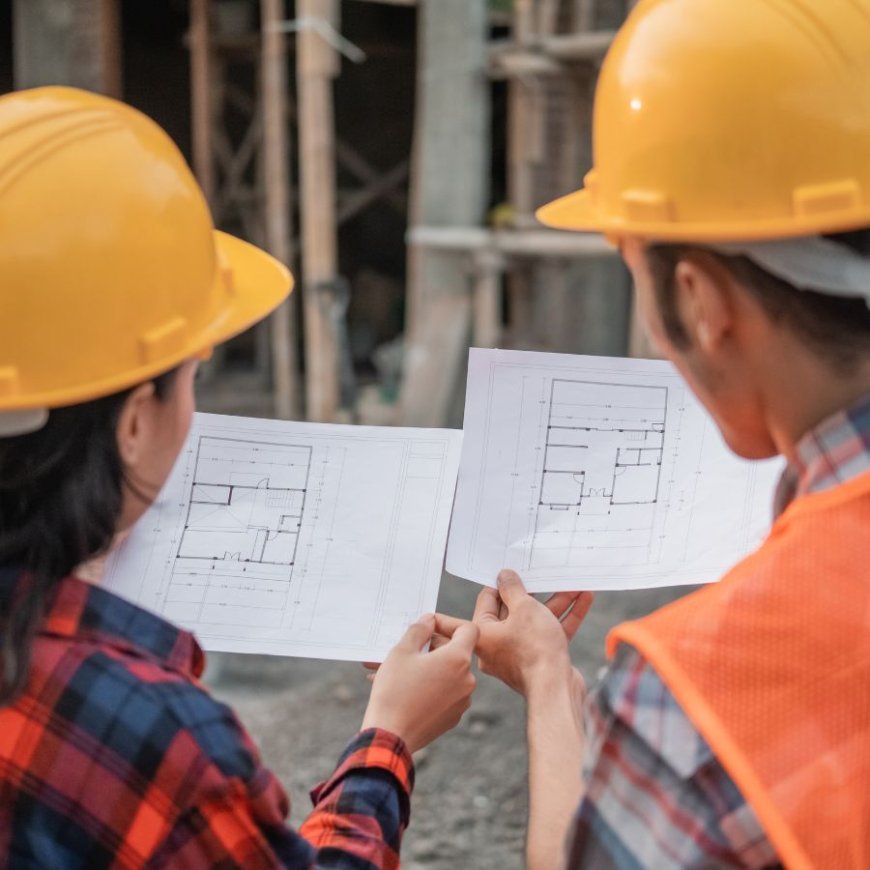How Do Builders in Melbourne Ensure Quality Control During Construction?

In Melbourne's fast-growing construction sector, ensuring high-quality results isn't a luxury—it's a necessity. From residential homes to commercial buildings, clients expect top-notch workmanship and lasting value. But how do home builders in Melbourne deliver on these expectations? The answer lies in a comprehensive, multi-stage quality control (QC) process.
Quality control in construction is the backbone of safe, compliant, and durable buildings. This article takes you deep inside the world of Melbourne construction, unpacking how builders uphold quality from blueprint to handover.
Understanding Quality Control in Construction
What is Quality Control (QC)?
Quality control in construction refers to the systematic procedures used to ensure that building work meets defined standards. It involves monitoring, inspection, documentation, and verification at every stage of the build.
It is important to distinguish QC from quality assurance (QA). QA focuses on the processes used to achieve quality, while QC evaluates the final output to confirm it meets expectations.
The Importance of QC in the Melbourne Market
Melbourne's real estate market is both dynamic and competitive. Builders face immense pressure to meet regulatory standards while satisfying increasingly savvy clients. In this environment, poor quality can result in costly reworks, reputational damage, or legal action.
Moreover, compliance with Australia’s National Construction Code (NCC), Victorian Building Authority (VBA) regulations, and other statutory requirements means QC is not optional—it's essential.
Pre-Construction Quality Measures
Site and Soil Assessments
Before the first shovel hits the ground, builders carry out comprehensive site and soil assessments. These geotechnical evaluations help determine:
-
Soil stability and bearing capacity
-
Drainage characteristics
-
Suitability for slab types
Choosing the right foundation design hinges on these assessments, and cutting corners here can lead to structural issues later.
Design and Planning Phase
In Melbourne, high-quality builds start with meticulous planning. Builders collaborate with licensed architects and engineers to develop compliant, efficient designs. The planning process includes:
-
Architectural design reviews
-
Engineering calculations
-
Local council approval
-
Building permit acquisition
Choosing the Right Builder
The pre-construction phase also includes one of the most crucial decisions: selecting a reputable builder. Look for:
-
VBA-licensed professionals
-
HIA or Master Builders Victoria (MBV) members
-
Verified customer testimonials and portfolio
This foundational choice significantly impacts the quality of the final structure.
In-Construction Quality Control Practices
Supervision and On-site Inspections
Once construction begins, quality control becomes a daily practice. Site supervisors and project managers oversee every stage, including:
-
Site preparation and excavation
-
Slab pouring and curing
-
Frame erection
-
Plumbing, electrical, and roofing
Builders schedule regular internal inspections to catch issues early and avoid rework. This hands-on supervision ensures real-time quality monitoring.
Material Selection and Handling
High-quality construction demands premium materials. Builders in Melbourne prioritize:
-
Sourcing from certified suppliers
-
Compliance with Australian Standards
-
Safe transportation and storage practices
Proper handling reduces waste, prevents damage, and maintains performance integrity.
Regular Progress Reporting & Documentation
Modern Melbourne builders use project management software to maintain:
-
Daily progress logs
-
Inspection checklists
-
Defect tracking records
These digital records promote transparency with clients and help meet compliance benchmarks.
Compliance with Building Codes and Safety Standards
Navigating the National Construction Code (NCC)
All Melbourne builders must adhere to the NCC, which governs:
-
Structural performance
-
Fire resistance
-
Sound insulation
-
Energy efficiency
Builders engage professionals to interpret and apply these codes to every component of the project.
Occupational Health and Safety (OH&S)
A safe construction site is a quality site. Builders enforce OH&S standards to:
-
Prevent workplace accidents
-
Ensure correct use of PPE
-
Conduct regular safety audits
Victorian WorkSafe compliance is both a legal and ethical responsibility for Melbourne builders.
Engaging Independent Inspectors and Certifiers
What Do Building Inspectors Look For?
Professional inspectors conduct detailed reviews at key construction milestones:
-
Pre-slab
-
Frame stage
-
Lock-up
-
Waterproofing
-
Final inspection
Each inspection ensures that building components meet specifications and that no shortcuts compromise integrity.
Role of Independent Building Surveyors
In addition to inspections, Melbourne projects often involve building surveyors. These professionals:
-
Review design documentation
-
Issue building permits
-
Conduct mandatory inspections
Whether council-appointed or private, their role is pivotal in ensuring legal and technical compliance.
Final Handover and Quality Assurance
The Practical Completion Inspection (PCI)
At the end of construction, a PCI is scheduled. This inspection involves:
-
Walkthrough with the client
-
Identification of defects or incomplete work
-
Compilation of a defect rectification list
Only after these issues are resolved is the project marked as complete.
Warranty and Maintenance Periods
Melbourne builders offer warranties that typically include:
-
Six-year structural warranty
-
Two-year non-structural warranty
-
Defect liability period (commonly 3 to 12 months)
These guarantees give homeowners peace of mind and hold builders accountable long after handover.
Embracing Technology for Enhanced Quality Control
Drones, 3D Scanning, and Construction Software
Forward-thinking builders integrate technology to improve accuracy and documentation. Tools like:
-
Drones for aerial progress shots
-
3D laser scanning for measurement validation
-
Software platforms like Buildertrend and Procore
help reduce human error and enhance real-time tracking.
Real-Time Monitoring & Cloud Collaboration
Builders now use cloud-based platforms to:
-
Share drawings and updates with stakeholders
-
Sync changes instantly
-
Track material use and cost variance
These innovations increase efficiency and reduce disputes.
Conclusion: Building with Confidence in Melbourne
Quality control isn't a one-time task—it's a continuous commitment. Melbourne builders who adhere to strict QC protocols earn trust, deliver lasting value, and build legacies.
From pre-construction planning and material selection to final inspections and technology adoption, every stage plays a role in producing a superior structure. For clients, knowing what to expect empowers them to choose builders who won't compromise on quality.
Frequently Asked Questions (FAQs)
1. What are the main quality standards builders in Melbourne must follow?
Builders in Melbourne must follow the National Construction Code (NCC), Australian Standards (AS), and local council guidelines to ensure safety and compliance.
2. How often do inspections happen during a construction project?
Inspections typically occur at critical stages: pre-slab, frame, lock-up, waterproofing, and final completion. Additional internal inspections may also be conducted.
3. Can homeowners request independent inspections during construction?
Yes, homeowners can hire independent inspectors to evaluate progress and compliance at any stage, offering an added layer of quality assurance.
4. Do reputable builders in Melbourne offer quality guarantees or warranties?
Absolutely. Builders provide warranties covering structural integrity (usually six years) and non-structural elements (typically two years), along with post-handover support.
5. What happens if defects are found after handover?
If defects are found within the warranty period, the builder is obligated to fix them. If not addressed, homeowners can escalate through the VBA or VCAT.
6. How do I check if my Melbourne builder is certified or licensed?
You can verify a builder's credentials via the Victorian Building Authority (VBA) website or by checking memberships with HIA or Master Builders Victoria.
What's Your Reaction?



















































